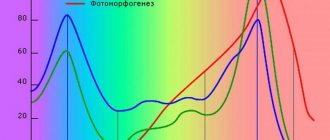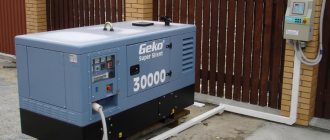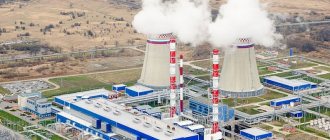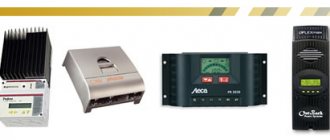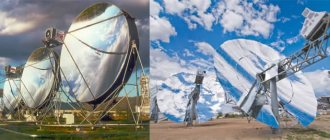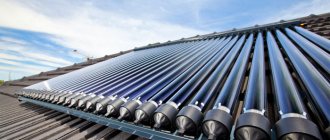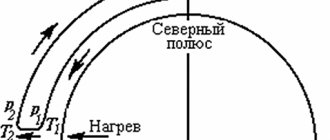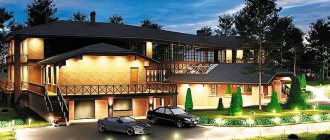Home » Useful information » What is DGU?
What is a diesel generator set and how does a diesel generator set work?
Why are diesel generator sets needed? How do they work? Is there a noticeable difference between a single-phase and a three-phase power plant? And if there is, which one is better to buy for the home, and which one for construction and production? Or maybe it's cheaper to rent? We answer all these questions in order.
What is DGU
DGS or diesel generator sets are equipment for producing electricity. Regardless of size and power, each such device is equipped with an internal combustion engine running on diesel fuel.
The main task of diesel power plants is to provide autonomous power where there is no centralized power grid. Small diesel power plants are used in everyday life - for welding, heating and lighting of country houses and country cottages. Medium and large generators power office and shopping centers, manufacturing plants, concerts and construction sites.
In cities, diesel generator sets are often used as a backup, as a backup source of energy. Outside the city and in the industrial zone, generators are constantly used - as the main station.
Operating principle of diesel power plant
The operating principle of a diesel power plant is to convert mechanical energy into electrical energy. The following key stages can be distinguished:
- Air is supplied to the engine cylinders, where it is compressed and heated to high limits. Then diesel fuel enters the working chamber under pressure and ignites.
- The gases formed as a result of combustion start the engine into operation. The crankshaft begins to rotate, setting the rotor of the electric generator in motion.
- When the generator rotor rotates, it excites an electromagnetic field, which, in turn, creates an inductive alternating current in the generator winding, which converts into electrical energy at the output.
Operating principle of a diesel generator set
The generating set consists of two components: a diesel engine and an electric generator powered by it. The differences are in power, noise level and performance.
Most companies produce power stations in several lines: portable “home”, medium and heavy-duty. Depending on the power and purpose of the diesel generator set, the “engine + generator” design is installed either on a light frame or on a car chassis. Large stations are additionally closed in a metal container or casing to protect against noise.
DES by hull type
Depending on the design of the housing, diesel generator sets are divided into three types: open on a frame, closed in a metal casing, and containerized.
Open diesel power plants
The components of an open-type diesel engine - a diesel engine, an alternator, a fuel tank, cooling systems and others - are mounted on a metal frame. Such power plants are intended for installation in protected premises with reliably functioning heating, ventilation, fire extinguishing, and alarm systems.
Open-type diesel power plants are equipped with single-phase and three-phase generators, air and water cooling systems; they have different power. They are used where special reliability is needed. Open diesel power plants are only stationary.
DES in a casing
The components of this type of diesel generator set are placed in a metal casing. It absorbs noise during operation of diesel power plants, protects equipment from frost, rain, snow, dust and other harmful factors. Thanks to this, the installation can be used outdoors.
The peculiarity of this type of design is its small size and, accordingly, power. Therefore, diesel power plants in a casing are usually used in small, including domestic, facilities. The advantages of such diesel power plants are ease of installation and low cost. Among the disadvantages, the complexity of repair and maintenance work is important: they have to be carried out outdoors, and in addition, it is impossible to do without dismantling the casing.
Container diesel power plants
A container-type diesel generator set is a complex of technological equipment mounted in a block box (container). Its walls, floor and roof are made of metal sheets and covered with insulation, and an anti-corrosion coating is applied to the outside. All this provides reliable protection from any weather conditions.
Inside the block container there is not only the main equipment of the diesel power plant, but also the plant’s life support systems - heating, ventilation, alarm, fire extinguishing, etc. Thanks to them, the container diesel power plant operates completely autonomously. Combined with high mobility (ease of transportation, start-up immediately after delivery to the site), this quality determines the main scope of application of diesel power plants of this type. Container power plants provide energy to areas remote from power grids, rotational camps, construction sites, mining enterprises and other production facilities without a central power supply, including in cold climates.
DES management
Almost all modern generators have an automatic control system: they turn on independently if the mains voltage disappears, and turn off as soon as power from the mains appears again.
You can control the station and monitor parameters using the electronic control panel. Typically this is a monochrome display that displays:
- station on/off indicators;
- installation status (stopped, in startup phase, ready for connection, in failure state);
- applied power, voltage between phase U and V and AC frequency;
- engine operating hours;
- load of each phase of the generator (if the generator is 3-phase);
- AC circuit breaker position;
- oil pressure;
- engine water temperature;
- fuel level;
- GU battery voltage;
- in case of failures – the cause of engine failure.
Access to the control panel is often protected by a 5-digit code - from 0 to 4.
Manufacturers DES
Many brands and manufacturers of diesel power plants are represented on the Russian market. Among the latter there are both domestic and foreign companies. They manufacture diesel power plants using components of their own production or use generators and engines from other well-known companies. The most popular products are from the following countries:
USA
The most famous American brands are:
- Cummins,
- Caterpillar,
- John Deere.
DES made in the USA are practical, easy to use, have a long service life and are economical to operate. Cummins diesel generator sets are manufactured in a wide range of capacities for both domestic and industrial applications.
Great Britain
represented on the market of diesel power plants by trademarks
- Wilson
- Perkins.
The latter company is known as a manufacturer of engines used in the assembly of diesel power plants by many companies.
France
French SDMO diesel generator sets are manufactured from components
- John Deere
- Volvo Penta (Sweden),
- Mitsubishi (Japan).
Türkiye
Türkiye, together with China, supplies diesel power plants under the AKSA brand. They are manufactured on the basis of diesel engines
- Cummins,
- John Deere
- Doosan (South Korea).
Russia
Russian manufacturers also assemble diesel generator sets based on domestic and imported components. Diesel engines are made in our country
- YaMZ (Yaroslavl Motor Plant),
- TMZ (Tutaevsky Motor Plant);
Belarusian products are popular
- MMZ (Minsk Motor Plant).
Advantages of DGS
- Stable operation under overloads. The higher the rotor speed, the more sensitive the station is to overloads. Powerful 3000 rpm generators will not tolerate network failures. They can only be connected for constant power supply. And installations with a frequency of 1500 rpm work well with voltage drops of up to 10% for 1 hour out of 12. Such diesel generator sets can be safely used for backup - just connect them to the main power source.
- High efficiency (efficiency factor) and low fuel consumption. If owners of small 1-2 kW generators hardly consider fuel, then in the case of industrial power plants the difference in spending on gasoline and diesel can be noticeable. All other things being equal, builders and industrialists choose diesel generator sets.
- Minimal operator participation. A mechanic is only needed to connect, start and maintain stable operation of the station. Everything else, except refueling, is taken care of by the electronics.
- Continuous operation up to 10 – 12 days. A good industrial power plant should operate for several days without interruptions and refueling. The minimum for diesel generators in areas without a centralized power grid is 5-7 days. Servicing a model with a shorter cycle is inconvenient - both for production and for life.
- Stable operation around the clock for up to 5 years. Generators with increased engine life are needed not only for large industries or remote villages. Ships, weather stations, launch stations - constant access to electricity is required in many areas. If a station is worn out, it will be written off after 4-5 years. Most generators are started from time to time - they can last 10 or 15 years.
- Fire safety. Unlike gas and gasoline, diesel does not burn openly - it contracts when ignited. The risk of fire in such conditions is minimal.
Types and options of diesel power plants (DES)
- synchronous and asynchronous
They differ in the method of obtaining the electromagnetic field necessary for generating electricity. Asynchronous ones are more reliable, durable and do not create radio interference, but without a built-in “starting amplification” system, they do not tolerate long-term overloads, unlike synchronous ones.
- single-phase and three-phase
Three-phase ones are capable of delivering voltages of both 220V and 380V, and single-phase ones only one of them. In addition, three-phase power plants have higher efficiency.
- portable, mobile, stationary
The difference is the ability of the diesel power plant to move. Mobile power plants are used as mobile sources of power supply.
- open power plants
The basic version of the power plant is intended for placing the electrical installation in a specially equipped room.
- enclosed power plants
The casing is designed to protect the power plant from adverse environmental conditions, dust and precipitation.
- container
The installation of the power plant in a block container is carried out for operation of the plant in harsh climatic conditions.
- high voltage using high voltage generators
Generation of high voltage electricity without the use of step-up transformers.
- high voltage using step-up transformers
To obtain electricity of 6.3 kV and 10.5 kV, it is necessary to place step-up transformers.
Cons of DGU
- Inability to idle. The minimum load on a diesel power plant should be 40-50% of the declared power. If the diesel engine produces less, it will not stall, but will wear out quickly.
- High noise level without casing. Medium and large stations must be supplied in protective containers. Models without casings are prohibited from being used in residential areas and in places where people work. It doesn’t matter whether it’s a city or a factory in an industrial zone. Generator noise is unacceptable.
- Relatively low environmental friendliness. Gas power plants are considered the safest for the environment. But getting fuel for them is not easy—and expensive. Diesel is not much “dirtier” than gasoline, but the price is noticeably more affordable.
- High price. Diesel power plants are more expensive than gasoline ones, but they pay for themselves in a few years due to low fuel consumption.
Diesel power plant design
The main element of a diesel electrical installation (station or unit) is a diesel generator, consisting of a diesel engine, a three-phase alternating current electric generator, cooling systems, lubrication, fuel supply and control panels.
Diesel power plants use generators of the types SGD (synchronous generator, diesel), ESS (single series with self-excitation), EC (single series), MSD open and MSA protected version with self-ventilation, etc.
In addition to the diesel generator, the diesel power plant includes:
- diesel cooling systems with pumps, tanks and pipelines;
- diesel fuel supply systems with fuel tanks, pumps and pipelines;
- diesel lubrication systems with oil tanks, oil coolers, pumps and oil lines;
- diesel starting systems with an electric starter, battery and charging generator or air compressor with cylinders, starting valves and pipelines;
- diesel heating systems with heaters, lamps and heating coils, heating and ventilation units;
- control, protection and alarm panels for diesel generators with a set of connecting cables;
- power distribution panels from diesel power plants to consumers;
- a rechargeable battery with rectifiers for recharging it, which serves to start the diesel engine and supply direct current to control circuits, alarms, and excitation circuits.
Types of Diesel Generators
Diesel power plants are divided into types according to power and method of movement. Portable models are the lightest and weakest - from 2 to 15 kW. They are bought for private needs, so they are compact and easy to carry in a car, or even carry in your hands.
Mobile diesel generators provide any amount of energy. Their main feature is the ability to move on a vehicle or trailer chassis. The heaviest and most powerful - stationary diesel power plants - generate up to 2-3 mW of electricity, but most manufacturers produce generators up to 1 - 1.5 mW.
Portable electrical installations - for home and garden
Most portable diesel generator sets are designed for 3 - 10 kW. This is ideal for suburbs where there are power outages or a centralized network has not yet been installed. Portable stations are produced specifically for private owners, so they are simple and convenient: low fuel consumption, minimal noise level, small size and weight. To connect such an installation, neither a separate room nor special qualifications are required.
Portable generators are not only purchased for the home - they are popular on unlit construction sites and in utility companies for repairing electrical networks.
Work resource
The simplest and cheapest diesel generator sets are seasonal. Their service life does not exceed 500 - 2500 operating hours. Such stations are purchased for summer cottage construction, renovations or rare trips out of town.
It’s a different matter – and a different price – for long-term use generators. They are designed for 3 - 5 thousand operating hours.
Manual or automatic start?
Budget generators are produced in a simplified design - which means they are started manually. The power supply switch is also manual: when the centralized electricity is turned off, the user chooses whether to start the diesel generator set or not.
Models with electric start are more expensive and heavier than manual ones. While the former are usually sold on a frame with handles, the latter can be equipped with casings, heating devices and an electric starter.
Household or professional?
If 15-20 years ago such a division made sense, now most manufacturers produce only “professional” generators. This means that the model can withstand long-term loads and large equipment for construction or cleaning can be connected to it.
Portable SDMO Models
In the new portable line, the French company SDMO relies on single-phase models with manual start and air cooling. An example of the simplest power station is the SDMO DIESEL 4000 C. The generator is suitable for backup power outside the city and for connecting professional tools.
Installation power – 3.4 kW, phase – single, rated voltage – 230 volts. Without refueling, the station operates for up to 5 hours with a fuel tank volume of 4.3 liters. The model is equipped with a Kohler KD350 engine with a rotation speed of 3000 rpm. If the oil pressure is too low, the protection system will work and the engine will not start. Installation weight – 70 kg.
Mobile diesel generator sets – for construction and repair
The main difference between a mobile diesel generator is increased mobility. Models can be relatively light (from 100 kg) or massive (8-12 tons), but they all fulfill the main task: they quickly arrive at the site and move freely around the site.
Mobile stations are produced for road and urban construction. Another application is powering concert venues. Such diesel power plants are optimal for open space - they do not require separate rooms, powerful lifts or widened doorways. Metal containers protect them from the weather. They also reduce engine noise.
Chassis options
European mobile generators - but almost all models (except for the lightest) have the option of installation on a trailed chassis. This is done for flexibility: the customer himself determines which car - or tractor - to install the generator on.
For diesel stations there are several base options:
- automobile or tractor chassis with a pneumatic braking system - for movement on roads of any category;
- chassis with PTS (vehicle passport) - for large power plants: equipment on such a base can only move along highways with a speed limit of up to 90 km/h;
- tractor chassis with PSM (self-propelled vehicle passport) - for heavy-duty diesel power plants: stations move along roads at a speed of no higher than 35 km/h.
Sometimes generators are installed not on wheelbases, but on sled-skis. Wide, all-metal skids attach to a car or other towing vehicle to haul heavy equipment over difficult terrain, such as rough terrain.
Example of a mobile SDMO station
Most construction and repair needs are covered by power plants of 60 - 80 kW. A typical example is the SDMO J88K three-phase diesel generator. The model provides up to 70 kW of energy and is designed for 12 hours of continuous operation.
Together with fuel, the station weighs up to 1.2 tons - it is usually installed on a single-axle or two-axle trailed chassis. The model is produced in an all-weather noise-insulating casing, has an automatic start system, a power circuit breaker and a safety system that automatically stops operation when the oil pressure is low. Engine brand: John Deere. Rotation speed – 1500 rpm.
Stationary diesel power plants
The most powerful diesel power plants generate up to 2-3 MW of electricity. They are produced for the main or backup power supply of construction sites, shopping centers, factories, strategic sites - any sites where a regular supply of electricity in large volumes is needed.
Almost all industrial diesel generator sets are three-phase, operate with a voltage of 380 V at low speeds (up to 1500 rpm) and have a liquid cooling system. This extends the life of the engine: European stations can operate continuously for up to 40,000 hours before the first failure. This is especially important in continuous cycle enterprises, where even a short shutdown of capacity is undesirable.
Calculating the maximum power
The first thing you need to do before buying or renting a large generator is to decide how much power you need. To do this, add up the consumption indicators of all devices connected to the network and add 30% to the resulting amount. This way you will build a “safety” reserve of power and protect yourself from a sudden stop of the station.
It is undesirable to use a diesel generator set “back to back” in terms of power: constant overload will wear out the engine ahead of schedule. A strong reserve - more than 50% of power consumption - will also be harmful. The ideal load option is 75% of the nominal output.
Synchronous or asynchronous
The choice depends on the characteristics of the site. Synchronous diesel generator sets are not as accurate as asynchronous ones - but they start up quickly during power outages and have increased performance. They are used for emergency power supply of residential buildings, construction sites and industries.
Asynchronous power plants are used to power precision equipment that is sensitive to voltage changes. Such models are purchased for medical institutions, weather stations and launch centers.
Industrial Models SDMO
European stationary diesel power plants are available in two versions - frame and casing. The buyer himself chooses the type of execution. An example of a typical industrial power plant is a three-phase diesel installation SDMO V650 C2 with a rated power of 520 kW.
The generator is equipped with a 6-cylinder Volvo engine and consumes up to 85 liters of fuel per hour at 75% load. The volume of the standard fuel tank is 600 liters, but it is possible to equip the station with additional tanks. The weight of the model in the container is 5.3 tons. When open, the station weighs 3.8 tons.
Classification of diesel engines
Purpose of diesel power plants
According to their purpose, diesel power plants are divided into main, reserve and emergency.
- The main ones are used as autonomous power sources in construction, agriculture, logging, etc., i.e. where for one reason or another it is impossible or impractical to use fixed power lines.
- Reserve ones are used to replace failed main units or as a backup power source in the event of a power outage from the input of a stationary external network.
- Emergency ones are used in hospitals, communication posts and other facilities for which a power outage is unacceptable. They must be ready at any time to take on part or all of the load in the event of a power failure at the facilities.
DPP design
According to their design, diesel power plants are divided into stationary and mobile.
Mobile diesel units are designated by the letters AD, stationary ASD or DG, automated units are designated by an additional letter A.
Mobile diesel power plants have a hood or body mounted on a car trailer or other vehicle. Stationary diesel power plants are also installed in specially equipped mobile cars (energy trains).
Mobile diesel power plants (diesel power plants) are designed as complete electrical installations mounted on any vehicle and protected from atmospheric influences. Diesel electric units are also manufactured as complete units in the form of separate units, most often mounted on a common frame.
Mobile diesel power plants are designed to operate outdoors at temperatures from -50 to +40°C, must be protected from atmospheric influences and ensure the operation of diesel power plants in conditions of vibration and shaking. Mobile diesel power plants are placed on a car trailer, in the back of a car or in a closed carriage. Types of mobile diesel power plants. with a metal casing (hood), with a hood on a car trailer, in the back of a car trailer or car.
Mobile power plants of the ESD type are equipped with diesel units of the AD (ASD) brand, and ESDA power stations are equipped with AD and ASDA units.
Units such as ASD, ASDA with a power of 30-100 kW are used as backup electrical installations. Power plants such as diesel power plants are also used for them. For stationary backup power plants of higher power (300-500 kW), diesel electric units of the AC, ASDA, DGA, etc. types are used. Such backup power plants are built in enclosed spaces. They are located in the immediate vicinity of the reserved facility or in the load center, for the reservation of transformer substations of consumers, taking into account the reservation of the most critical consumers of electricity in the first place.
Stationary diesel electrical installations are designed for normal operation and generation of electricity of the required quality at ambient temperatures from +8 to +40°C, altitude above sea level not higher than 1000 m and relative air humidity up to 98% at +25°C. Mobile electrical installations generate electricity when the ambient temperature fluctuates from -50 to +50°C with the same humidity and installation above sea level at an altitude of up to 4000 m.
At stationary diesel power plants (DES), four-stroke (less often two-stroke) diesel engines with a power of 110, 220, 330, 440 and 735 kW are installed. Stationary diesel power plants of average power do not exceed 750 kW, large diesel power plants are being built with a capacity of up to 2200 kW or more.
Stationary diesel power plants (DES) are designed to operate in enclosed spaces with ambient temperatures from +8 to +40°C, and the electrical units must be installed on a foundation.
There are the following types and types of diesel engines:
- by area of application, for communication lines, power trains, construction, agriculture, etc.;
- by power, low power - up to 50 kW, medium - up to 200 kW and high power above 200 kW;
- by automation: first, second or third degree of automation,
- on the diesel cooling system. with air, water-air (radiator) or water-water (double-circuit).
- In addition, power plants are often divided into power, lighting and special purpose (charging, instrumental, etc.).
Buy or rent?
A diesel generator that you own will last for several years. This is the main argument of purchase supporters. In fact, large diesel power plants are more often rented than purchased - long-term rental of a good generator is cheaper than full purchase or leasing.
This is especially true for seasonal enterprises operating at full capacity for up to 3–6 months a year. For example, companies hosting outdoor events and concerts are busy in the summer and fall - until the first snow. They are suitable for mobile generators on a chassis with a power of up to 80 - 250 kW. Large events where it is necessary to connect 300 - 350 kW equipment take place several times a year. It is not profitable to buy a heavy generator for their sake.
For seasonal production, busy 3-4 months a year, it is enough to rent stationary power plants up to 500-1000 kW. Resort facilities with power outages use rental container diesel power plants with a capacity of up to 400 - 700 kW.
One of the most difficult issues when renting a diesel generator set is maintenance. Large stations need to be monitored around the clock to prevent failures. To do this, a mechanic is placed next to the generator. Power plant rental companies supply equipment with their trained technicians. The customer is required to provide a change house - or other living space close to the generator.
Delivery, possible repairs and refueling of the station, as well as settlements with mechanics and operators are the responsibilities of the diesel generator rental company. If the generator is your property, all these issues are dealt with by you.
